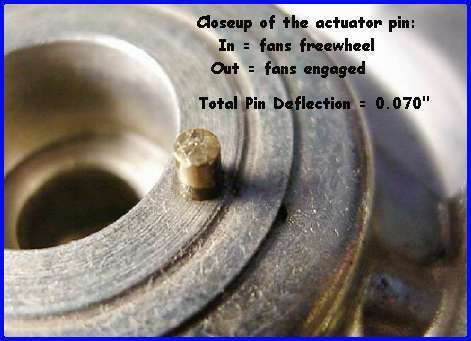biggerhalf
New Member
Hello All !
Since some time now my Viscous fan clutch seems to be permanently engaged irrespective of engine temperature.
When accelerating, the fan makes an awesome roar akin to a propeller plane taking off.
Funny/impressive though it may be, it's also supremely annoying and I'd swear it robs the engine of power, too.
The issue didn't always used to be there and I am convinced the engine was making more power (and was definitely way quieter) prior to this development.
I did a good amount of homework on the issue and it seems not that uncommon across many brands (not only MB).
I understand that the viscous fan clutch should engage when the engine temp is high, otherwise just make the fan 'freewheel' with the barest of friction.
I read about 'chopped carrots' test (lol) somewhere (possibly here) and attempted something similar.
After some driving I stopped and, with engine at idle and the engine temp at nominal 82-85C, I used a thick foam kneeling pad and carefully put it to the fan blades hoping I'd be able to stop the fan.
Nope - the fan would neither slow down nor stop.
I didn't apply too much force as it was obvious the fan would win.
I believe that, given a correctly working clutch, the fan should disengage at about 3.500RPM, too, regardless of engine temperature.
With the bonnet open, I gave it some gas and it doesn't look like it will.
The 'turbine' roar seems to follow RPMs, getting louder along with the revs.
With the engine off, when spinning the fan manually, it is not stuck solid.
I can spin it somewhat, I'd say it has 'a couple of blades' worth of a rotational inertia, at most.
Questions :
- If the engine temp was nominal (82-85C) and the clutch was good - should I be able to stop the fan with little effort at idle (not with my fingers, obvs) ?
- Is it possible that engine loses power with this issue present ?
- Can the fun clutch be repaired or is a new one the best way forward ?
Please advise.
Thanks !
Since some time now my Viscous fan clutch seems to be permanently engaged irrespective of engine temperature.
When accelerating, the fan makes an awesome roar akin to a propeller plane taking off.
Funny/impressive though it may be, it's also supremely annoying and I'd swear it robs the engine of power, too.
The issue didn't always used to be there and I am convinced the engine was making more power (and was definitely way quieter) prior to this development.
I did a good amount of homework on the issue and it seems not that uncommon across many brands (not only MB).
I understand that the viscous fan clutch should engage when the engine temp is high, otherwise just make the fan 'freewheel' with the barest of friction.
I read about 'chopped carrots' test (lol) somewhere (possibly here) and attempted something similar.
After some driving I stopped and, with engine at idle and the engine temp at nominal 82-85C, I used a thick foam kneeling pad and carefully put it to the fan blades hoping I'd be able to stop the fan.
Nope - the fan would neither slow down nor stop.
I didn't apply too much force as it was obvious the fan would win.
I believe that, given a correctly working clutch, the fan should disengage at about 3.500RPM, too, regardless of engine temperature.
With the bonnet open, I gave it some gas and it doesn't look like it will.
The 'turbine' roar seems to follow RPMs, getting louder along with the revs.
With the engine off, when spinning the fan manually, it is not stuck solid.
I can spin it somewhat, I'd say it has 'a couple of blades' worth of a rotational inertia, at most.
Questions :
- If the engine temp was nominal (82-85C) and the clutch was good - should I be able to stop the fan with little effort at idle (not with my fingers, obvs) ?
- Is it possible that engine loses power with this issue present ?
- Can the fun clutch be repaired or is a new one the best way forward ?
Please advise.
Thanks !
Last edited:

